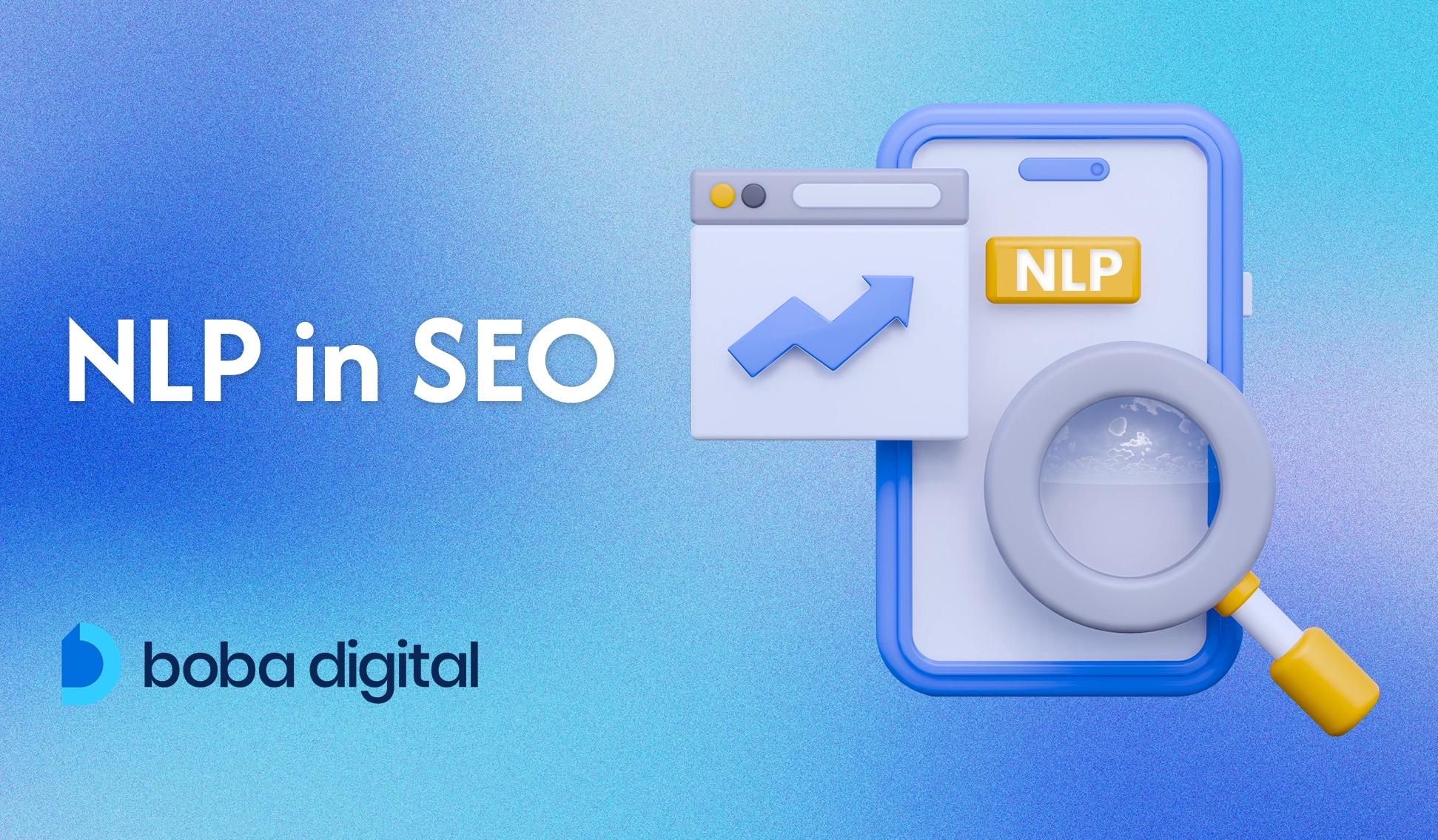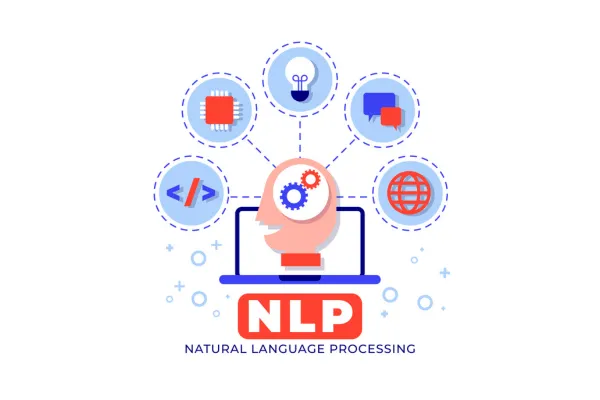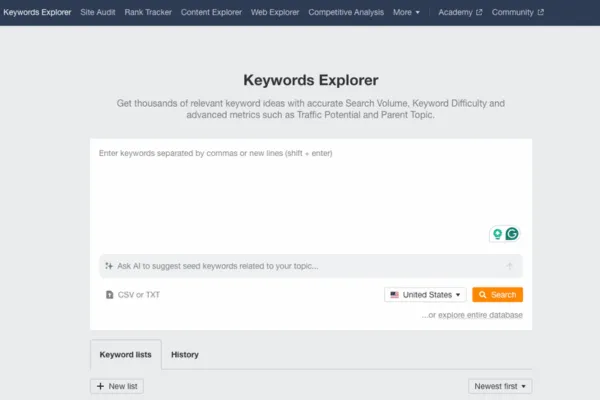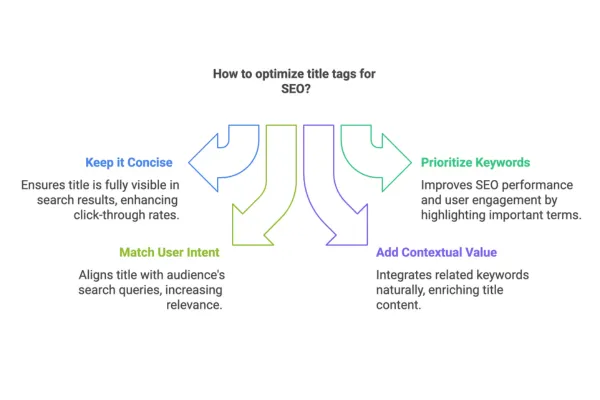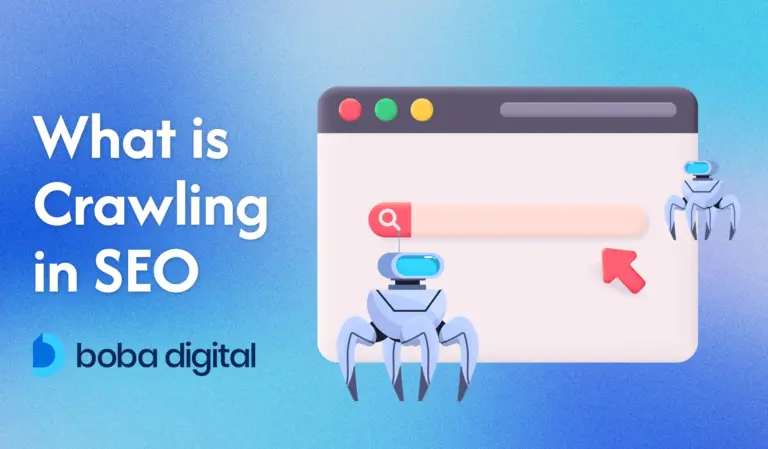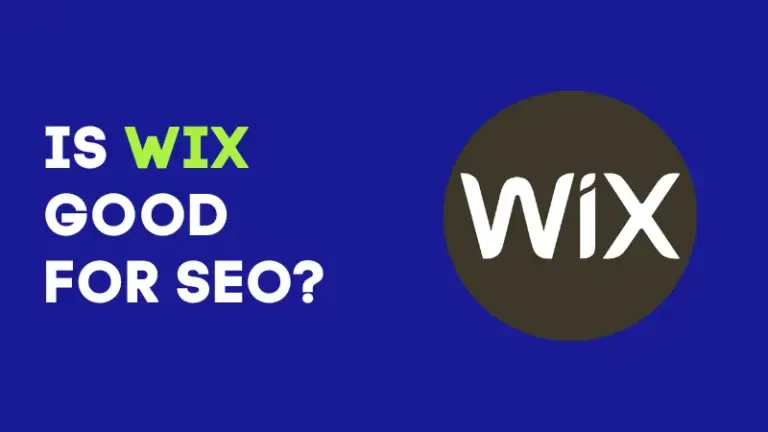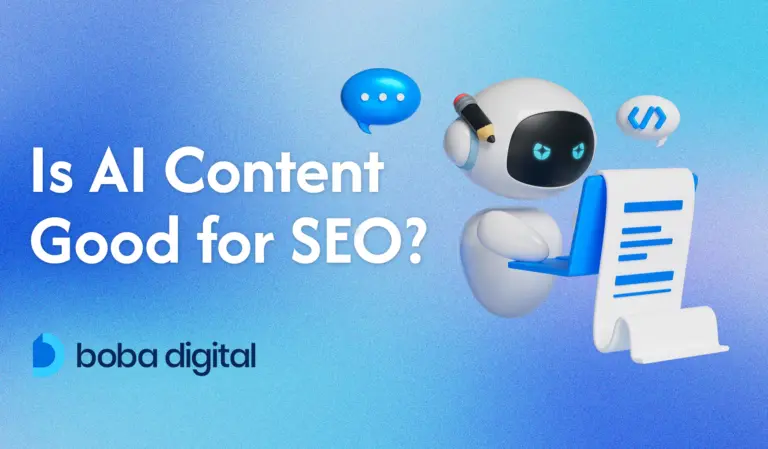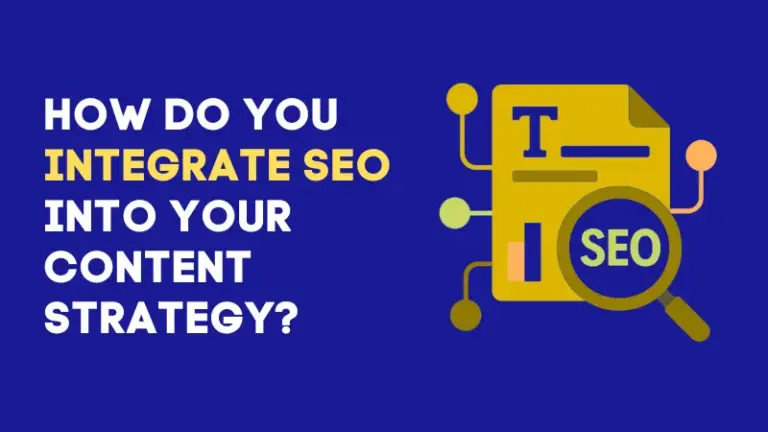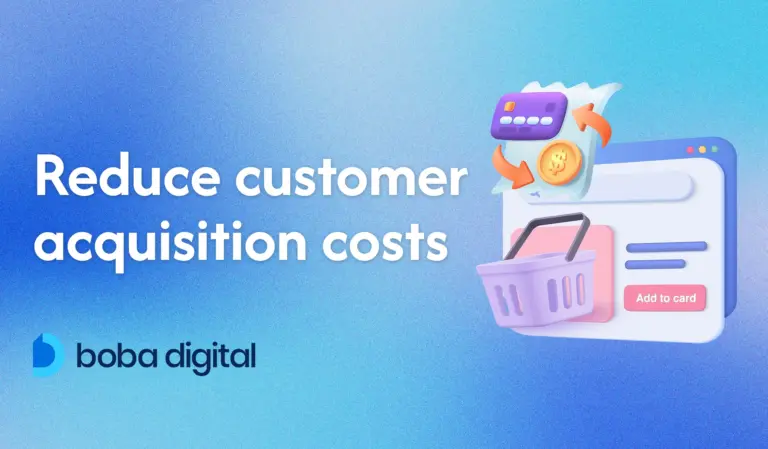What is NLP in SEO and How It Can Enhance Your Website’s Performance
Natural Language Processing (NLP) is transforming the way search engines understand human language. Instead of just matching keywords, modern SEO now focuses on grasping the deeper context, relationships, and intent behind search queries. This shift means that search engines like Google are getting better at analyzing natural language queries and delivering results that match what users are truly looking for.
With AI advancements like Google’s BERT algorithm, SEO strategies are moving away from keyword-stuffing tactics. Instead, they now emphasize creating high-quality content that aligns with both primary and related secondary keywords.
The goal? To make sure your content isn’t just visible to search engines but also genuinely valuable to your audience.
Curious about how NLP can take your SEO strategy to the next level? Keep reading—you’re in for a game-changer!
What is NLP in SEO?
Natural Language Processing (NLP) uses artificial intelligence to help search engines understand human language. Rather than simply matching keywords, NLP dives deeper, analyzing the meaning behind search queries to deliver more accurate and relevant results. This technology allows search engines to interpret natural language queries, deciphering context, tone, and even sentiment, which leads to a more intuitive search experience for users.
In traditional SEO, success was often tied to keyword frequency. The strategy was simple: the more a specific keyword appeared on a webpage, the better its chances of ranking. However, this approach led to keyword stuffing and often produced content that lacked genuine value.
As search engines evolved, so did their understanding of language. Google’s algorithm updates, including BERT (Bidirectional Encoder Representations from Transformers), marked a significant shift toward semantic understanding.
Today, search engines no longer focus solely on isolated keywords. Instead, they analyze entire phrases, consider synonyms, and understand related concepts to grasp the broader intent behind a search query.
This evolution from basic keyword matching to sophisticated semantic analysis means businesses must now create content that not only includes target keywords but also delivers contextually rich and meaningful information.
How Does NLP Work?
Think of NLP as a blender: Just as a blender turns whole fruits and vegetables into a smooth, drinkable mix, NLP transforms raw language into structured data that computers can easily process.
Natural Language Processing (NLP) works by teaching computers to understand, interpret, and generate human language. It breaks down complex language into smaller, manageable components—like words, sentences, and punctuation—then uses advanced algorithms and statistical models to analyze and extract meaning from them.
One of the foundational steps in NLP is tokenization, where sentences are divided into individual words or phrases, known as “tokens.”
For example, the sentence “NLP improves SEO performance” would be broken down into [“NLP”, “improves”, “SEO”, “performance”]. These tokens are the building blocks for further analysis.
Next, part-of-speech (POS) tagging assigns grammatical labels to each word, identifying nouns, verbs, adjectives, and more.
For example, in the phrase “Google’s algorithm updates frequently”, POS tagging would recognize “Google’s” as a noun, “algorithm” as another noun, and “updates” as a verb. This step helps search engines understand not only what words are present but also how they function within the context of a sentence.
Sentiment analysis is another powerful NLP technique. It evaluates the emotional tone of a piece of text, categorizing it as positive, negative, or neutral.
For example, the sentence “This product is amazing” would be tagged as having a positive sentiment, which could influence how search engines prioritize content in certain queries.
Why Do BERT and NLP Work Together?
BERT, or Bidirectional Encoder Representations from Transformers, is a powerful open-source machine learning framework designed specifically for Natural Language Processing (NLP). It plays a crucial role in helping computers understand the nuances of human language, particularly when dealing with ambiguous or conversational queries.
Unlike traditional models that analyze text from left to right or right to left, BERT processes language bidirectionally. This means it looks at the words before and after a particular term to grasp the full context of a sentence.
For example, consider the search query: “Can you bank on a river bank?” Traditional models might struggle to differentiate between “bank” as a financial institution and “bank” as the side of a river. BERT, however, uses the surrounding words to determine the intended meaning, enabling search engines to deliver more relevant results based on the context.
BERT and NLP work together by combining BERT’s advanced contextual understanding with NLP’s ability to break down and analyze human language.
While NLP provides foundational techniques like tokenization, part-of-speech tagging, and sentiment analysis, BERT enhances these processes by adding a deeper layer of comprehension. This synergy is particularly valuable in understanding natural language queries, which often include idiomatic expressions, slang, or complex phrasing.
3 Ways to Use NLP to Optimize for SEO
1. Keyword Research
NLP has transformed keyword research by shifting the focus from simple keyword matching to understanding the deeper meaning and user intent behind search queries. Instead of just targeting exact keywords, marketers can now identify semantically related keywords and create content that matches what users are genuinely searching for.
This allows for a more natural and relevant approach to SEO strategy, avoiding keyword stuffing while still achieving NLP optimization.
NLP-driven keyword analysis employs techniques such as:
- Tokenization: Breaking down text into individual words or phrases.
- Stemming and Lemmatization: Reducing words to their root forms (e.g., “running” to “run”).
- Part-of-Speech Tagging: Assigning grammatical roles to words to better understand sentence structure.
- Entity Recognition: Identifying important names, places, and concepts within the content.
Popular tools like NLTK, SpaCy, Stanford CoreNLP, and Google Cloud Natural Language API use these techniques to perform in-depth keyword analysis. They help identify relevant keywords, analyze sentiment, and extract key entities from a text, contributing to a more sophisticated and effective SEO performance.
2. Internal and External Backlinks
NLP plays a significant role in shaping both internal linking strategies and external link-building approaches.
By analyzing the contextual relevance of links within a webpage, NLP helps search engines like Google understand how a linked page relates to the surrounding content. This analysis goes beyond simply identifying hyperlinks; it evaluates the context, sentiment, and semantic connections between the content on the linking page and the destination page.
For internal links, NLP aids in identifying which pages are most relevant to link within your own website. Instead of randomly linking to different pages, NLP techniques such as entity recognition and semantic analysis suggest the best opportunities for linking to related content.
For example, if you’re writing about SEO strategies, NLP might recommend linking to existing articles on keyword research, on-page SEO, or technical SEO—topics that are contextually relevant and provide value to the reader.
When it comes to external backlinks, NLP is instrumental in crafting natural and context-rich anchor texts that align with the surrounding content. This approach not only enhances the user experience by guiding them to valuable information but also signals to search engines that the link is a natural and valuable resource.
Search engines reward this contextual relevance by improving the linked page’s ranking on search engine results pages (SERPs).
In link-building strategies, both internal and external, the emphasis is on creating high-quality content that attracts external backlinks organically.
Utilizing NLP techniques to analyze user intent and optimize meta tags, title tags, and anchor texts ensures that links are not only relevant but also strategically placed to boost SEO performance.
3. Competitor Analysis
NLP offers powerful tools for analyzing competitors’ content and strategies, providing valuable insights that can shape your own SEO approach. By applying NLP techniques such as keyword extraction, sentiment analysis, topic modeling, and entity recognition, you can dive deep into your competitors’ content to uncover their targeted keywords, key themes, and audience sentiment.
Imagine being able to analyze a competitor’s top-ranking blog post. NLP can break down the content to reveal not just the surface-level keywords but also the deeper semantic structures and intent behind the text.
For example, through topic modeling, you might discover that while your competitor focuses heavily on technical SEO, they rarely touch on NLP optimization or semantic analysis—a potential gap you could exploit with your content.
Another powerful approach is using competitor backlink analysis. By analyzing where your competitors earn their external backlinks, NLP can help identify content types and topics that attract links. This insight can guide your own link-building strategy, enabling you to create high-quality content that fills gaps in the market and naturally attracts relevant backlinks.
NLP also plays a role in social listening, allowing you to assess how audiences react to competitor content. Analyzing sentiment in social media mentions or user queries can reveal pain points or unmet needs.
For example, if sentiment analysis shows mixed reviews on a competitor’s recent SEO strategy guide, you could respond by creating a more informative and user-friendly version that directly addresses those concerns.
Page Optimization Through NLP in SEO
NLP offers a strategic approach to optimizing various on-page elements of your website, enhancing both SEO performance and user experience. By applying natural language processing techniques, you can refine your meta tags, title tags, meta descriptions, and page content to align better with user intent and search engine algorithms.
Creating a Keyword Database
To effectively utilize NLP for SEO optimization, start by building a robust keyword database. Begin by identifying the main categories of your business and drafting a list of terms or phrases associated with each category. Think about the language your customers might use to describe your products or services and explore synonyms and related terms to broaden your reach.
For instance, if your business specializes in digital marketing services, your categories might include SEO strategy, PPC management, content marketing, and social media marketing. Under each category, list specific terms like “search engine optimization”, “pay-per-click advertising”, “creating high-quality content”, and “social media campaigns”.
You can further refine your keyword list by using popular SEO tools such as: Google Keyword Planner, Semrush, Google Trends, Moz Keyword Explorer, Google Search Console, Ahrefs, Ubersuggest.
These tools advantage from NLP techniques to help you analyze search intent, identify long-tail keywords, and discover relevant entities that can enhance your content strategy.
Additionally, they can assist with query analysis, revealing which search queries drive the most traffic to your web pages and helping you align your page’s content with user queries more effectively.
Title Tags in NLP-Driven SEO
Title tags play a key role in NLP-driven SEO, acting as the first point of contact between your content and search engines. These short, descriptive phrases provide a concise summary of a webpage’s content, helping search engines understand the page’s topic and its relevance to user queries.
When optimized correctly, title tags not only improve your page’s chances of ranking higher on search engine results pages (SERPs) but also enhance your click-through rate (CTR) by making your content more appealing to searchers.
In an NLP-driven SEO strategy, title tags must do more than just contain target keywords. They should reflect the contextual relevance of the page, align with user intent, and include semantic variations of primary keywords.
For instance, if your content is about NLP techniques in SEO, a well-optimized title tag might be “How NLP Techniques Boost SEO Performance | Practical Tips and Strategies” rather than a generic title like “NLP in SEO”.
Best Practices for Title Tags in SEO
- Keep it Concise: Title tags often get truncated in search results at around 550-600 pixels wide, which is typically 60-75 characters. Keeping your title within this limit ensures it remains fully visible to searchers.
- Prioritize Keywords: Place the primary keyword at the beginning of the title where possible, as this can improve both SEO performance and user engagement.
- Match User Intent: Incorporate natural language queries and phrases that align with what your audience is searching for.
- Add Contextual Value: Use NLP techniques to integrate relevant entities and related keywords naturally within the title.
URL Structure in NLP-Driven SEO
A well-structured URL is a foundational element of SEO strategy, providing clarity for both users and search engines. When combined with Natural Language Processing techniques, a clear and descriptive URL structure enhances a webpage’s visibility and search engine performance by improving semantic understanding and user experience.
URLs that are short, clear, and descriptive not only help users navigate your site easily but also assist search engines in interpreting the content of your page.
For example, a URL like www.bookstore.com/fiction/mystery immediately informs both search engines and users about the page’s content. In contrast, a cryptic URL like www.bookstore.com/12345 offers no context, leading to potential confusion and missed engagement opportunities.
Best Practices for URL Structure in NLP and SEO
- Use Descriptive Keywords: Incorporate relevant keywords that align with user intent and search queries. For example, if your page is about NLP techniques for SEO, a URL like www.yoursite.com/seo/nlp-techniques is more effective than a generic or numerical link.
- Maintain a Logical Hierarchy: The URL structure should reflect the site architecture, showing a clear path from the homepage to specific content. This not only improves user experience but also helps search engines understand the relationship between pages.
- Avoid Unnecessary Characters: Stick to simple, clean URLs without extra characters, underscores, or dynamically generated strings. Hyphens are preferred over underscores as word separators, as they are better recognized by search engines.
- Keep URLs Short and Sweet: While it’s important to be descriptive, avoid overly long URLs. Short URLs are not only more readable but also less likely to be truncated in search engine results pages (SERPs), maintaining the full impact of your title tag and meta description.
- Align with NLP Techniques: By using natural language queries in URLs, you make your content more accessible for voice search and conversational AI tools. For example, a URL like www.yoursite.com/how-to-use-nlp-in-seo aligns well with the way users naturally search for information.
Headings
Headings play a vital role in organizing your content, enhancing readability, and guiding both search engines and users through your page. When used strategically, heading tags (H1 to H6) break down content into scannable blocks, making it easier for search engines to understand the structure and hierarchy of your information.
This contextual relevance is crucial in an NLP-driven SEO strategy, as it helps search engines interpret the main topics and subtopics of your content.
Here’s a simple example of how to structure headings from H1 to H6:
<h1>Comprehensive Guide to SEO Strategies</h1>
<h2>1. Understanding SEO Fundamentals</h2>
<h3>1.1 What is SEO?</h3>
<h4>1.1.1 Importance of SEO in Digital Marketing</h4>
<h5>1.1.1.1 How Search Engines Use Keywords</h5>
<h6>1.1.1.1.1 Example of Long-Tail Keywords</h6>
In this example:
- H1 defines the main topic of the page.
- H2 introduces key sections.
- H3 to H6 add depth, showing the relationship between primary and secondary information.
Guidelines for Creating SEO-Friendly Headings
- Use Keywords Naturally: Incorporate target keywords in H1 and H2 tags, ensuring they match search intent without sounding forced.
- Maintain a Logical Hierarchy: Use heading levels sequentially (e.g., don’t jump from H1 to H4 directly). This helps both users and search engines follow the content flow.
- Keep Headings Concise: A good heading is descriptive yet brief, typically under 70 characters. Avoid overly complex phrasing and stick to clear, natural language.
- Add Value, Not Fluff: Every heading should introduce relevant content, guiding the reader and adding contextual relevance to the page. Avoid vague headings like “More Information”—instead, specify what the section covers, like “How NLP Improves SEO Performance”.
- Enhance Readability: Break long sections into smaller, scannable parts with relevant subheadings. This improves the user experience and makes the page more attractive for featured snippets.
- Align with User Queries: Use natural language queries in headings, which can help capture voice search traffic. For example, a heading like “What Are the Best SEO Techniques for 2025?” aligns well with how users might ask questions in search engines.
Writing the Meta
Meta descriptions play a pivotal role in SEO strategy, acting as a concise summary of a webpage’s content. While they don’t directly impact search engine rankings, a well-crafted meta description can significantly boost click-through rates (CTR) by providing searchers with relevant and enticing information.
With Natural Language Processing emphasizing contextual understanding and user intent, a strategic meta description can bridge the gap between search queries and your page’s content.
Why Are Meta Descriptions Important in SEO?
When a user conducts a search query, search engines analyze meta descriptions to determine how well a page matches the search intent.
An effective meta-description not only summarizes the content but also sets the expectation for what the user will find upon clicking. This clarity can enhance the user experience by ensuring the content meets their needs, thereby increasing the likelihood of a click.
Tips for Writing Compelling Meta Descriptions
- Align with User Intent: Understand what your target audience is searching for and craft a meta description that directly addresses their needs. If a user searches for “How to optimize SEO using NLP”, a good meta description might read:
“Discover practical NLP techniques to boost your SEO strategy, improve search intent understanding, and create high-quality, context-driven content.” - Incorporate Target Keywords Naturally: Including primary keywords in your meta description not only signals relevance to search engines but also reinforces to the user that your page has the information they’re looking for. Avoid keyword stuffing, though—maintain a natural flow.
- Stay Concise and Descriptive: Keep meta descriptions under 160 characters to avoid truncation in search engine results pages (SERPs). Every word should add value, clearly conveying the page’s purpose.
- Use Active Voice and Persuasive Language: Engage readers with actionable phrases like “Learn,” “Discover,” “Find out,” or “Get insights on…” This not only draws attention but also encourages user engagement.
- Address Specific Problems or Needs: A strong meta description often highlights the solution or benefit offered by the page. For example:
“Need better SEO results? Learn how NLP can transform your content strategy and drive more organic traffic to your website.” - Avoid Generic Statements: Be specific about what the reader will gain. Instead of saying “Learn about SEO techniques,” say “Explore advanced NLP techniques to improve your SEO performance and search rankings.”
If your page focuses on NLP in SEO, a well-crafted meta description might look like this:
“Unlock the power of NLP to boost your SEO strategy. Learn how natural language processing can enhance content relevance, improve search intent understanding, and drive more organic traffic.”
Alt Tags
Alt tags, also known as alt text, play a significant role in SEO strategy by providing search engines with additional information about the content of images on a webpage.
While search engine algorithms can analyze text with advanced NLP techniques, they still rely on alt tags to understand and index visual content. Without alt text, search engines may struggle to grasp the context and relevance of images, potentially hindering the SEO performance of the site.
Alt tags are not just for SEO; they also improve website accessibility. Screen readers for visually impaired users rely on alt text to describe images aloud, ensuring an inclusive web experience. Moreover, when images fail to load, alt text is displayed in their place, offering a backup explanation of what the image would convey.
When crafting alt tags, it is important to strike a balance between being descriptive and concise. Ideally, alt text should be around 125 characters or less, delivering the essential message of the image without unnecessary details. Instead of stating the obvious, focus on communicating the relevant information that the image adds to the page content.
For example, if an image shows a chart about SEO performance trends in 2025, a good alt tag would be:
“Chart showing the rise of NLP-driven SEO strategies in 2025”
This description not only explains what the image is but also aligns with the page’s topic, reinforcing the semantic relevance for search engines.
Avoid generic descriptions like “image of a chart” or “blue graph” as they do not provide meaningful context. Instead, use alt text to integrate relevant keywords naturally, enhancing the page’s SEO optimization without keyword stuffing.
Anchor Text
Anchor text is the clickable text in a hyperlink, often highlighted in blue, that directs users to another webpage.
It plays a dual role in SEO strategy, offering context to both users and search engines. When crafted thoughtfully, anchor text not only guides users by setting expectations for what they will find upon clicking the link but also helps search engines understand the content and relevance of the linked page.
NLP interprets anchor text by analyzing its context within the page’s content. It evaluates the surrounding semantic signals to determine the relationship between the source page and the destination page.
For example, if the anchor text reads “learn more about NLP techniques for SEO”, search engines associate the linked page with NLP, SEO techniques, and related topics. This contextual link strengthens the semantic connection between pages, contributing to better indexing and ranking on search engine results pages (SERPs).
Best Practices for Optimizing Anchor Text
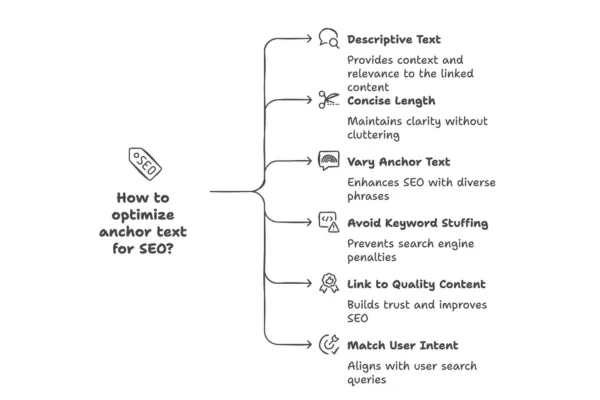
- Use Descriptive and Relevant Text: Instead of generic phrases like “click here” or “read more”, use anchor text that accurately reflects the content of the linked page. For instance, “discover effective SEO strategies” offers more context than a vague prompt.
- Keep It Concise: While being descriptive, avoid overly long anchor text. Aim for a natural length that conveys the link’s purpose without cluttering the content.
- Vary Anchor Text Across Your Site: Using diverse phrases for internal links can enhance your SEO performance by preventing over-optimization and showcasing a wider range of relevant keywords. However, maintain a consistent theme that aligns with the target page’s topic.
- Avoid Keyword Stuffing: While keywords in anchor text can improve SEO, stuffing too many into a link can trigger search engine penalties. Instead, prioritize natural language queries that align with user intent.
- Link to High-Quality Content: Ensure that anchor text leads to valuable and relevant pages. Linking to low-quality or unrelated content can damage both user trust and SEO rankings.
- Match User Intent: Align anchor text with what users are searching for. If the page targets long-tail keywords, the anchor text should mirror that specificity, enhancing the chances of capturing voice search traffic and improving search quality.
Example of Good vs. Bad Anchor Text
- Good: “Learn how to optimize content with NLP techniques”
- Bad: “Click here”
The good example provides a clear expectation of the linked content, integrating relevant keywords and contributing to a stronger SEO strategy.
Content in a logical and Structured way
A well-structured layout helps search engines index and understand your content by breaking down information into clear, digestible sections. For users, a logical flow makes it easier to follow your ideas, ensuring a seamless reading experience. Clear organization allows for better comprehension, enhances engagement, and helps to convey the relevance of your content.
In the context of NLP, search engines rely on structured content to interpret semantic meaning, relationships, and user intent.
A well-organized page provides cues that guide search engines in understanding the broader context of the topics being discussed. When content is fragmented or chaotic, it becomes more difficult for search engines to determine its relevance, potentially hurting its SEO performance.
On the other hand, structured content allows search engines to map out connections between keywords, entities, and concepts, improving the chances of ranking higher for relevant queries.
Tips for Organizing Content Logically
- Use Clear Section Headers: Break your content into distinct, easy-to-navigate sections with descriptive headings (H2, H3, etc.) that clearly convey the topic of each section. This not only helps users scan through the content but also allows search engines to understand the key themes of your page. For instance, instead of a generic heading like “SEO Tips”, use a more descriptive one like “Effective SEO Strategies for 2025”.
- Start with a Strong Introduction: Each section should begin with an introductory sentence that states the purpose of the section, offering users a brief overview of what they can expect. Follow up with supporting information that delves deeper into the topic, breaking complex ideas into digestible points. This keeps readers engaged and guides them through your explanation step by step.
- Use Bullet Points or Lists Where Appropriate: Organizing information into lists can enhance readability and highlight key takeaways. This allows readers to quickly grasp important points and helps search engines identify important keywords and concepts.
- Organize Content Hierarchically: Group related ideas together and organize them from the most important to the least important. A logical structure typically follows a pyramid shape—starting broad with an introduction, followed by detailed explanations, examples, and case studies, and wrapping up with conclusions or actionable takeaways.
- Ensure Each Paragraph Serves a Purpose: Avoid filler content and ensure every paragraph contributes to the discussion. This helps maintain focus and prevents the content from becoming overwhelming or repetitive. Each section and paragraph should drive your main argument or explanation forward.
- Make Content Scannable: Users often skim content, so it’s essential to make it easy to digest. Use short paragraphs, varied sentence lengths, and engaging subheadings. Also, include keywords naturally within the headings and text to help search engines understand the content’s relevance.
- Incorporate Relevant Visuals and Media: Use images, videos, and interactive elements to enhance the user experience. These can help break up long blocks of text, making the content more engaging. Additionally, search engines can index images and videos if they have relevant alt tags, contributing to overall SEO optimization.
- Deliver High-Quality and Relevant Content: At the heart of any NLP-driven SEO strategy is the delivery of valuable content that addresses the audience’s needs. Stay aligned with the search intent of your target audience by delivering content that is not only relevant but also actionable. For example, if your audience is looking for SEO tips for beginners, your content should break down complex strategies into simple, digestible steps.
Use Structured Data
Structured data is a tool that helps search engines understand the context and meaning of the content on a webpage. It acts like a label, providing additional information that allows search engines to display more relevant and informative results in search engine results pages (SERPs).
When implemented correctly, structured data can trigger rich snippets—such as images, ratings, or summaries—that provide users with quick insights directly in the search results, enhancing visibility and improving click-through rates.
The most commonly used format for structured data in SEO is JSON-LD (JavaScript Object Notation for Linked Data). JSON-LD has become the preferred choice because it’s easy to implement, flexible, and compatible with existing HTML, without disrupting the flow of the page.
By embedding structured data in JSON-LD format, you can give search engines a clearer understanding of your content, allowing them to display richer and more detailed results. This, in turn, helps increase your page’s relevance and user engagement.
Other formats for structured data include Microdata and RDFa (Resource Description Framework in Attributes), but all these formats use the Schema.org vocabulary to define data types and properties consistently. Schema.org provides a standardized system for labeling and organizing content, which search engines can then interpret accurately.
Crush the Competition with NLP SEO – Partner with Boba Digital Today!
Natural Language Processing (NLP) is revolutionizing SEO by helping search engines better understand user intent, context, and the meaning behind search queries. By utilizing NLP techniques like semantic analysis, entity recognition, and contextual understanding, businesses can create more relevant, high-quality content that resonates with both search engines and users.
NLP-driven SEO helps you go beyond simple keyword matching, allowing you to optimize content for real user needs and deliver rich search results that drive better click-through rates. Whether it’s optimizing meta descriptions, anchor text, or structured data, NLP ensures your content aligns with modern SEO practices, improving both visibility and user engagement.
At Boba Digital, we specialize in applying advanced NLP techniques to transform your SEO strategy and stay ahead of the competition.
Ready to elevate your digital marketing efforts and unlock the full potential of NLP SEO?
Contact us today and schedule an appointment to get started! Let Boba Digital guide your brand toward greater success.
FAQs
Is NLP SEO important for my website?
Yes, NLP SEO is crucial for modern websites as it helps search engines understand the context and intent behind your content, making it more likely to rank higher and be visible in rich search results.
How does NLP impact keyword research?
NLP allows for more semantic keyword analysis, helping identify related terms and concepts rather than focusing on exact keyword matches, improving relevance and user engagement.
What is the difference between traditional SEO and NLP SEO?
Traditional SEO focuses on keyword matching, while NLP SEO emphasizes context, meaning, and user intent, providing a deeper understanding of content.
What are some key NLP tools used in SEO?
Popular NLP tools for SEO include Google BERT, NLTK, SpaCy, and Google Cloud Natural Language API. These help analyze and optimize content for better search engine performance.

